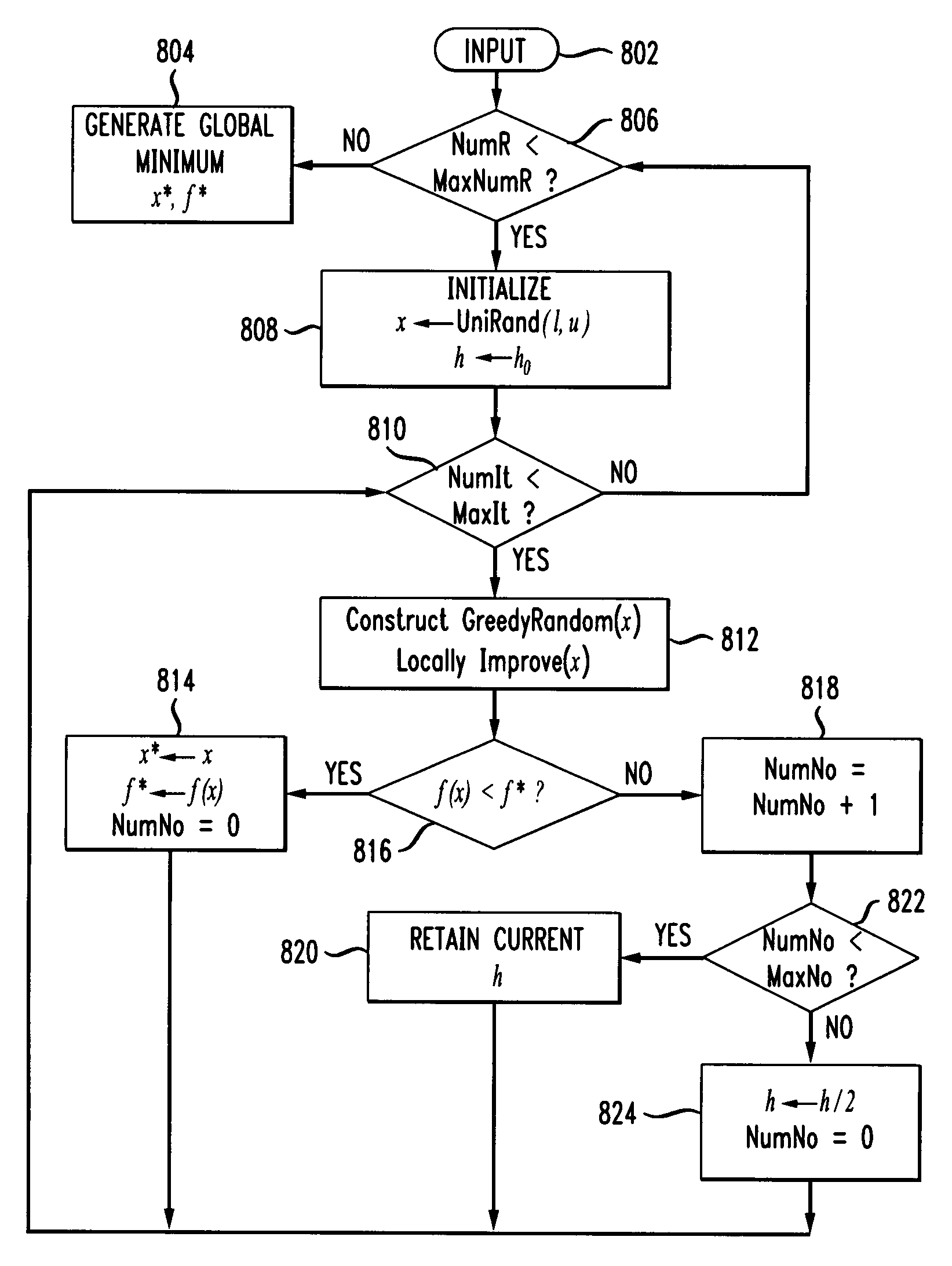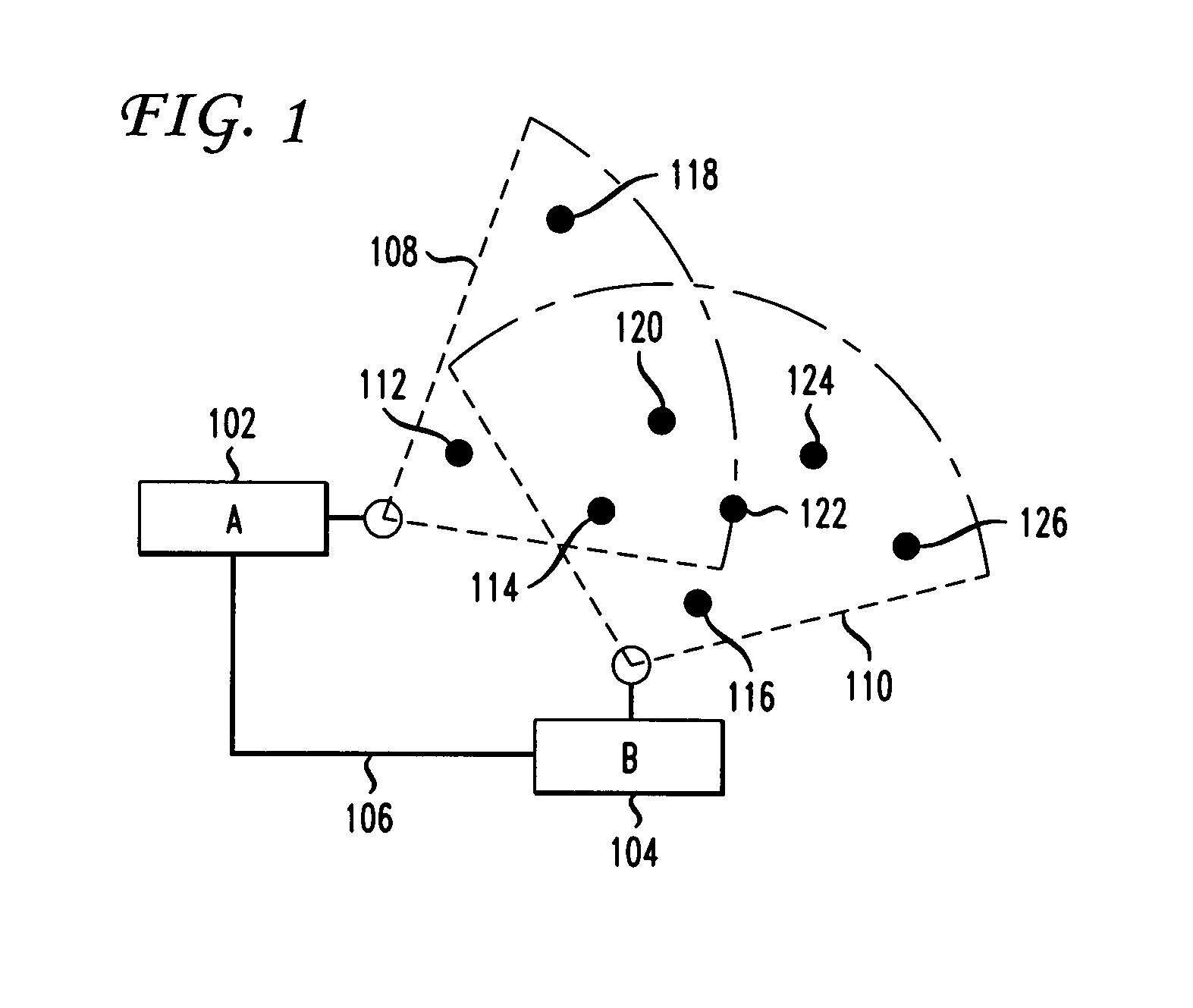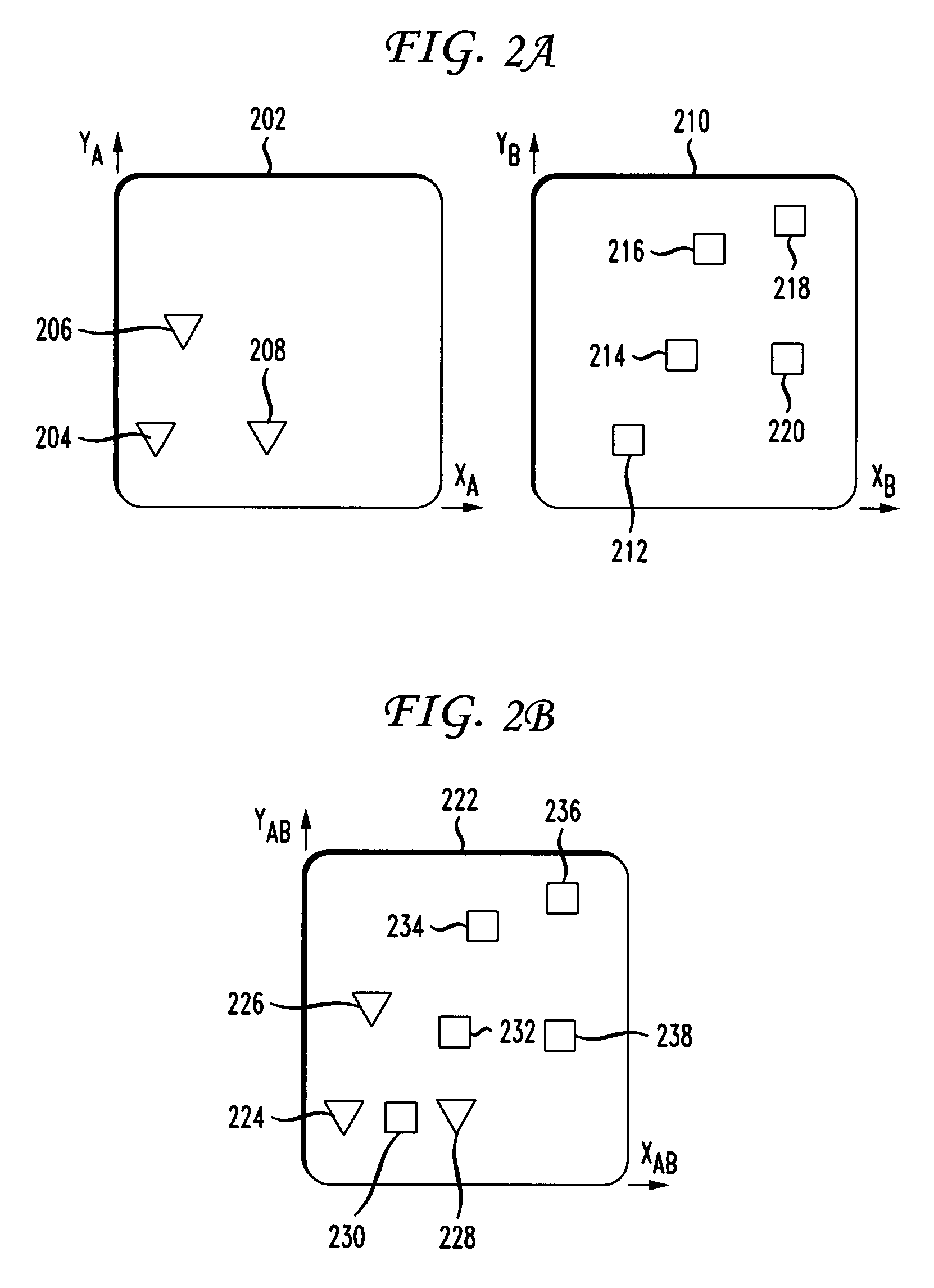Sensor registration by global optimization procedures
a global optimization and sensor technology, applied in the field of sensor registration, can solve the problems of limited number of sensors which a measurement system can accommodate, wide range of complexity of sensors, and limited number of sensors, so as to reduce the systematic error function and the effect of less complex
- Summary
- Abstract
- Description
- Claims
- Application Information
AI Technical Summary
Benefits of technology
Problems solved by technology
Method used
Image
Examples
Embodiment Construction
[0030]Sensor registration is a process applicable to any generic data measurement system comprising two or more sensors which collect sets of measurements from one or more objects. Herein, an “object” refers to an entity with characteristics that may be measured. Examples of objects include a car, an air mass, and a light beam. In the examples above, characteristics include the speed of a car, the temperature of an air mass, and the wavelength of a light beam. Objects may also include non-physical entities. In an economics application, for example, an object may include a business, and characteristics may include profit, number of employees, and cost of goods sold.
[0031]Herein, a “sensor” refers to an entity that may measure characteristics of an object. In the examples above, sensors include a speedometer for measuring the speed of a car, a thermometer for measuring the temperature of an air mass, and a spectrometer for measuring the wavelength of a light beam. Sensors are not rest...
PUM
 Login to View More
Login to View More Abstract
Description
Claims
Application Information
 Login to View More
Login to View More - R&D
- Intellectual Property
- Life Sciences
- Materials
- Tech Scout
- Unparalleled Data Quality
- Higher Quality Content
- 60% Fewer Hallucinations
Browse by: Latest US Patents, China's latest patents, Technical Efficacy Thesaurus, Application Domain, Technology Topic, Popular Technical Reports.
© 2025 PatSnap. All rights reserved.Legal|Privacy policy|Modern Slavery Act Transparency Statement|Sitemap|About US| Contact US: help@patsnap.com



